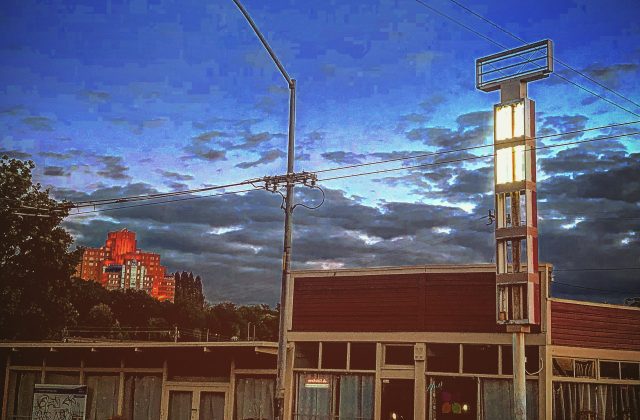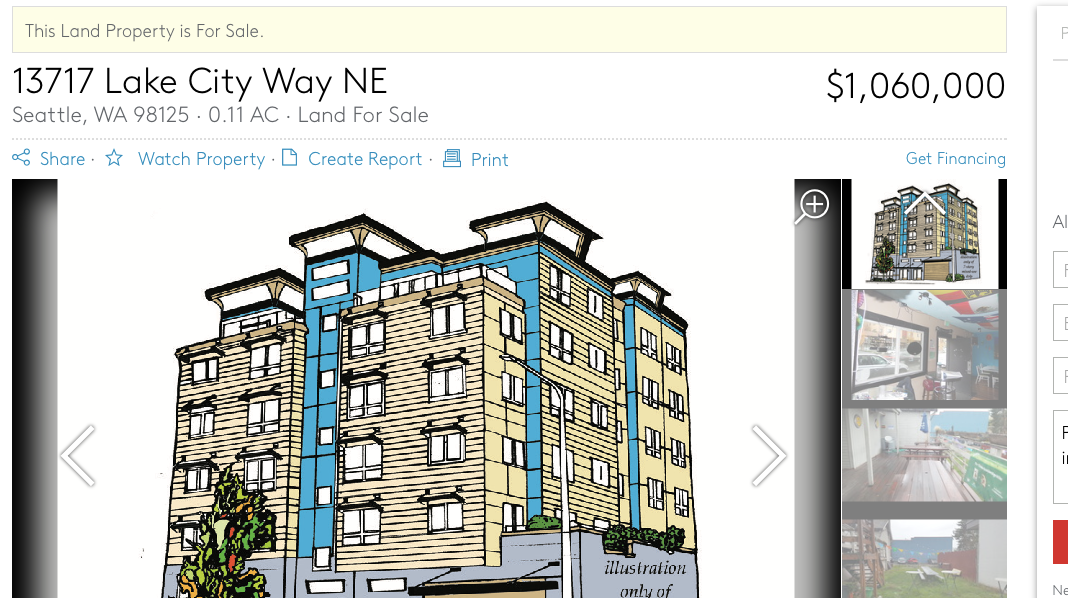Digging Deeper Into Non-Profit Housing Costs: Plymouth’s 501 Rainier
Seattle For Growth is the only voice in the whole housing conversation bringing attention to the costs of non-profit housing production. Why should you care? No matter what your opinions about housing the fact is that non-profits have the most political power in the way housing policy is made; they are the reasons why local politicians say we need to increase the supply of “affordable housing” (we need to increase housing supply so housing will be affordable). Because non-profit costs are so high, and production as difficult as market rate housing, they need more and more money. Their argument is that the market will never produce housing for people with less money so local government should tax market rate housing and just about everything else to get them that money. Unless we push back on this, we’ll continue to have inflation in market rents which just fuels their argument. So, along with the Joint Legislative Audit and Review Committee (JLARC) we’re digging in to their costs.
We’ve just completed a large public records request from the Washington State Commerce Department, King County, the Washington State Housing Finance Commission, and Seattle’s Office of Housing for detailed financial information on non-profit housing projects funded in Seattle over the last 5 years. This includes pro forma documents, construction costs and documents, and related items. It’s a lot to look at and process. We’ve identified over ten years, about 74 projects in Seattle that produced a total of 5,576 units at a total cost of $1,371,026,279, an average cost per unit of $245,880. Over that 10 year period, the production of non-profit housing was about 620 units per year, reaching a peak production of 783 units in 2015 and a low of 284 in the next year, 2016. You can take a look at the top line of all this here: List of HTF + LIHTC 2008 to 2018. At some point I am planning on creating a page that links to all the documents.
But let’s take a look at one project that is currently funded and in the early stages of development, 501 Rainier by Plymouth Housing Group also called Housing at Linc’s. This project is coming together at the old Linc’s Fishing Tackle store, an iconic fishing supply store that served in a way as a gateway to the Rainier Valley. It’s a familiar site to anyone who has lived in Seattle over the last twenty years. I went out to the site the other night and took some photos.
I, sadly, never set foot in Linc’s and I believe that it is a loss. But I’d much rather see the site turned into housing. But is the project an efficient use of housing resources?
Here are the top line numbers. I took these numbers from the Consolidated Funding Applications Forms which were part of our disclosure request.
| 501 Rainier (Housing at Lincs) | |
| Project Details | |
| Floors | 6 |
| Units | 84 |
| Unit SF | 39412 |
| Gross Residential SF | 47684 |
| Services | 5473 |
| Gross Non-Residential SF (1 Floor) | 9130 |
| Parking | 2799 |
| Total Gross Square Footage | 56814 |
| Total Development Cost | $30,096,526 |
| Cost Per SF | $530 |
| Cost Per Unit | $358,292 |
Here’s a look at where the funding for the project is coming from and how it is being spent.
| Funding Sources | ||
| Seattle Office of Housing | 19% | $5,719,541 |
| State Housing Trust Fund | 10% | $3,000,000 |
| King County | 3% | $1,000,000 |
| Federal Home Loan Bank Affordable Housing Program | 2% | $750,000 |
| Deferred Fee | 2% | $481,846 |
| 9% Low Income Housing Tax Credits | 57% | $17,129,309 |
| Plymouth Housing Group Loan | 7% | $2,015,830 |
| Total Sources: | 100% | $30,096,526 |
| Uses | ||
| Land (6,000 SF) | 12% | $3,507,335 |
| Construction: | 64% | $19,396,634 |
| Soft Costs: | 13% | $4,026,535 |
| Pre-Development / Bridge Financing | 1% | $288,052 |
| Construction Financing | 1% | $418,329 |
| Permanent Financing | 1% | $300,019 |
| Capitalized Reserves | 3% | $869,143 |
| Other Development Costs | 4% | $1,290,479 |
| Total Development Cost: | 100% | $30,096,526 |
Let me say that I am not a non-profit housing expert. Far from it. I was a non-profit housing director for about three years and worked on one project. That means I am familiar with these budgets but not familiar enough to weigh in on this project from a non-profit perspective. I can sort of take a high level look at this. I’ll share thoughts from a market rate developer in later paragraphs.
There are a lot of funding sources here, including the City, the State in the form of the Housing Trust Fund, King County, tax credits from the Washington State Housing Finance Commission, and the Federal Home Loan Bank’s Affordable Housing Program (FHLB HP), a source I’m not familiar with. The developer fee deferral is a kind of a hat trick to put the fee for the non-profit required by most funding sources back to work for the project. Obviously non-profits don’t “profit” but the fee is sort of what would be considered, loosely, the “profit” for the developer here. If memory serves, the non-profit is always required to hold aside about 10 percent of the project income as their fee, but some can be deferred to fund the project. And the loan from Plymouth Housing Group appears to be for the non-residential portion of the project. Each and every one of these sources comes with lots of lawyers and paperwork.
As for the costs the land seems very expensive. I looked up a comparable property in Lake City and it was being offered at about $1,000,000. I’ll post a screen shot because I am guessing the link won’t last forever. But the site currently has an old bar on it that would have to be demolished to make way for a project like the one pictured.
The construction costs? I have no idea myself. But you can take a look at the detailed construction cost estimate. I do recall my own efforts to reduce costs on my project were fruitless. There simply wasn’t anything in the budget that be gotten rid of that would appreciably or significantly lower the cost of the whole project. For example, the project could save $1,436,180 by getting rid of the line item “finishes.” But what’s in that line? Most of it is gypsum drywall, an item that has spiked in costs recently along with other things like lumber and steel. Most of the construction budget is of the “it is what it is” variety.
Soft costs are also hard to say much about and are mostly for the architect, ringing in at $1,104,670 and more than $2 million for the developer fee. But that fee is a requirement and is mostly an accounting function. There doesn’t seem to be much fat in the soft costs. And I distinctly remember that when we had change orders we often had to dig into soft cost contingency and lenders really didn’t like that.
So when I look at the total cost I can’t see any savings on the surface. There isn’t a line called “waste” or “inefficiency” just like in a market rate project budget there isn’t a line for “greed” and “avarice.” But when one considers that the recently repealed tax on jobs was supposed to set aside $47 million for housing to “solve” homelessness for some 14,000 people, this project is sobering. This one 84 unit project with a delivery schedule of sometime in 2020 would consume about 75 percent of that annual tax. One project. At the cost per unit of this project the total annual tax would only pay for about 130 units. Even with more sources added, at this rate of production this just won’t create enough units to “solve” very much of the problem.
What does a market rate developer think of these numbers? I asked a developer who builds comparable product, studios and smaller apartments, to tell me what he thought of these numbers. Here’s what he said:
As a comparison we are near building permit issuance for an 85 unit . . . mix of micro studios, and micro 1BR’s on a similar sized lot [near a] light rail station. We paid $450k for the dirt three years ago (zoned NC-3 85), although current market price is probably around $650k – $750k.Our project is 6 stories plus roof deck and basement (one level of concrete podium). Our project costs are around $13.5M, including hard costs, soft costs, permit fees, financing, etc. I find it hard to believe they paid $3.5M for 6,000 SF (nearly $600 psf). If they did, that’s insane…So, as you can imagine all their costs are out-of-whack (where do I start). Our architectural, for example, was less than half of theirs. The developer fee is high but it’s presence doesn’t bother me that much; any project should have a profit margin in there. But it’s based on an enormous budget rather than something closer to market.
Things that look unusual:
Land Costs are 2x what you would expect, esp. for a site needing remediation.
Developer fee is 12% of construction cost. Typical is more like 3%
Contractor P&O is 2% of construction. Typical is more like 8%
750K for permits fees and hookups seems odd. I would normally guess that to be in the 100K-200K territory.
10% construction contingency is very high, unless this is for an early stage estimate.
If we apply the numbers from a builder who builds projects like this to the non-profit project, the total development cost is more like $13,950,000 or about $166,071 per unit. That would mean more like 283 units for $47,000,000.
What is unfortunate is the non-profits refuse to acknowledge there is an issue here. The answer is always more money, more money, more money. The thirst for more revenue sources to fund these kinds of projects will never be quenched. And while looking at the details doesn’t yield anything that points to an easy fix, it would be helpful if the experts on building non-profit housing were putting their energy into reforming this system rather than disputing the fact that the system really is expensive and inefficient.
Those experts and supporters already acknowledge that the problem of high cost housing is shared across market rate and non-profit sectors. Remember when the board of Capitol Hill Housing was talking about suing me because I was doing long division (88 units at $47 million is about $500,000 per unit)? Here’s what their board members said then:
A lot of people focus on numbers, but we should focus on value of our buildings, including their sustainability and their effect on the community. [Another board member] mentioned that to the extent that there are cost differentials, we could give examples of why it might be more expensive and that those things should be changed (ie government regulations). [The first board member] proposed that comparing market rate and affordable housing is like comparing apples and oranges.
The public is now pushing back and their message is clear: “Improve the way you’re spending the money we’re giving you or we won’t give you anymore.” How much longer will non-profits be able to use elected officials to shake down market rate development through policies like Mandatory Inclusionary Zoning (MIZ)? Those officials may no longer hold office at the end of next year. The time is now to talk about reducing costs.




